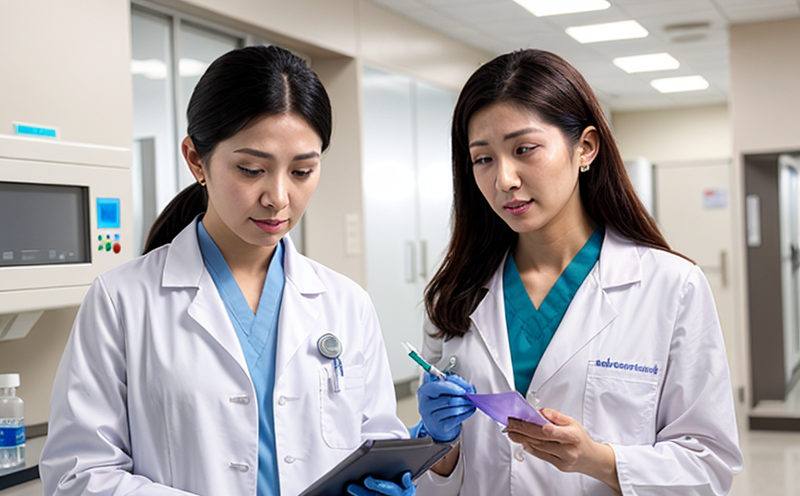Immunogenicity Risk Testing of Biosimilars
In today’s fast-paced pharmaceutical landscape, biosimilars have emerged as a crucial component in healthcare strategies aimed at reducing costs without compromising on efficacy. However, the development and testing of these biopharmaceuticals come with unique challenges, particularly concerning immunogenicity risk. This article delves into the intricacies of Immunogenicity Risk Testing of Biosimilars, highlighting why it matters, the standards applied, and the methodologies used.
Immunogenicity refers to the body’s immune system reacting to a foreign substance like a drug. For biosimilars, which are highly similar but not identical versions of biologic drugs (originators), understanding and managing this risk is paramount. Mismanagement can lead to adverse effects ranging from mild discomfort to severe complications that could compromise patient safety.
The significance of immunogenicity testing lies in its potential to predict the likelihood and severity of immune responses to a biosimilar product. This foresight enables pharmaceutical companies to take preemptive measures, ensuring that any risk is minimized during clinical trials and post-market surveillance. Accurate assessment can also guide regulatory submissions by providing robust evidence supporting the safety profile of the biosimilar.
Biopharmaceuticals are complex products due to their large molecular structures (proteins, antibodies), which can vary subtly between different manufacturing processes or even batches. These variations could potentially trigger an immune response in patients who have been previously exposed to the originator drug. The challenge for regulators and developers is to ensure that biosimilars do not induce such responses.
The importance of immunogenicity risk testing cannot be overstated, especially considering the global shift towards biosimilars as a cost-effective alternative to brand-name biologics. Regulatory bodies worldwide, including the U.S. Food and Drug Administration (FDA) and European Medicines Agency (EMA), have established stringent guidelines for assessing this risk.
Understanding why immunogenicity testing matters is crucial for pharmaceutical companies involved in biosimilar development. It helps ensure that patients receiving these treatments experience minimal side effects, enhancing trust between healthcare providers and the public. Furthermore, successful outcomes from such tests can lead to expedited regulatory approvals, thereby accelerating access to affordable treatment options.
Why It Matters
The importance of immunogenicity risk testing cannot be understated in the context of biosimilars. As previously mentioned, understanding and managing this risk is essential for ensuring patient safety and maintaining the integrity of biosimilar products.
A significant concern revolves around cross-reactivity between the biosimilar and the originator drug. Even minor differences in amino acid sequences or post-translational modifications can lead to an immune response. This reaction might manifest as increased production of antibodies against the biosimilar, potentially leading to reduced efficacy or even adverse health outcomes.
Another critical aspect is patient-specific factors that could influence immunogenicity risk. These include genetic predispositions, previous exposure to similar therapies, and individual differences in immune system functioning. By identifying these variables through rigorous testing, developers can better tailor their products to suit diverse populations effectively.
The regulatory landscape also plays a vital role here. Regulatory agencies require comprehensive data on immunogenicity as part of the approval process for biosimilars. Compliance with these standards ensures that only safe and effective drugs reach the market, thereby protecting public health interests.
Moreover, successful completion of immunogenicity risk testing can significantly impact the commercial prospects of a biosimilar product by providing strong evidence supporting its safety profile. This information is crucial for gaining trust among healthcare professionals and consumers alike.
Applied Standards
The evaluation of immunogenicity risk in biosimilars follows well-established international standards designed to ensure high levels of accuracy and reliability. Among these, the most commonly referenced are:
| Standard | Description |
|---|---|
| ISO 17025:2017 | International standard specifying general requirements for the competence of testing and calibration laboratories. |
| ASTM E2846-13 | American Society for Testing Materials guideline providing protocols for assessing immunogenicity in biologics. |
| Regulation (EC) No 785/2004 | European legislation mandating bioequivalence studies including immunogenicity assessments. |
The selection of appropriate tests and methods is crucial to adhere to these standards. These guidelines emphasize the need for precise techniques capable of detecting even trace amounts of antibodies, ensuring that any detected responses are genuine rather than artifacts.
Scope and Methodology
| Aspect | Description |
|---|---|
| Specimen Preparation | Initial steps involve collecting serum samples from patients who have received the biosimilar. These samples are carefully processed to remove cellular debris and ensure homogeneity. |
| ELISA Assay | The enzyme-linked immunosorbent assay is used to measure antibody levels against specific epitopes on the biosimilar. This technique allows for quantification of IgG subclass antibodies, providing insights into potential cross-reactivity. |
| Antibody Sequencing | To identify unique sequences within the antibody repertoire that may be elicited by the biosimilar. This helps in understanding the nature of immune responses. |
| In Vivo Studies | These studies involve administering the biosimilar to animals and monitoring for any adverse reactions indicative of immunogenicity. Such data can provide valuable insights into human safety profiles. |
The comprehensive approach taken in these tests ensures that all aspects contributing to immunogenicity risk are thoroughly investigated. By adhering strictly to the outlined procedures and utilizing advanced technologies, laboratories can deliver accurate results that are pivotal for regulatory approval processes.





